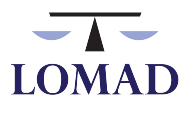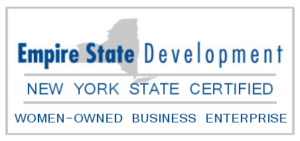Happy Friday the 13th to all! First off, I would like to introduce myself, as this is my first contribution for this blog. My name is Rob Caggiano, and I was recently brought into the LOMAD family as a Law Clerk as I await my bar results and (hopefully) my pending admission to the New York State Bar. Now that we have introductions out of the way, my goal today is to provide some insight into many of those pesky time constraints which both sides of the aisle should be mindful of while handling a New York State Workers’ Compensation claim. If I do my job right, all of my readers will walk away being able to avoid stepping on any “cracks” in the system which will undoubtedly break their client’s back.
WCL § 18 – Employee’s Obligation to Report an Injury
Oh no, an employee just walked under a ladder at work – and well, it fell on him. Looks like his bad luck did not waste any time coming. This employee will now have an impending Workers’ Compensation claim, however, he must comply with WCL § 18. This section of the WCL statute places a burden on an employee who sustains an injury at work to report said injury to his employer within 30 days of its occurrence. Now technically, § 18 requires that this notice be in writing, with certain enumerated requirements. However, the Board will often find no harm, no foul, if the employer was found to be put on sufficient notice of the accident via oral notice from the injured employee, notice from another employee, or witnessed the accident themselves. Hey claimant’s attorney, your client’s luck is already turning around!
WCL § 28 – Employee’s Requirement for Reporting to the Board
Back to that injured employee with a ladder bruise. Having already given notice to his employer within 30 days, he must also inform someone else – the Board. WCL § 28 requires that all claims for Workers’ Compensation be filed with the Chair of the Board within two years after the date of the accident. This injured employee may have dodged his back luck from the ladder if he did not strictly comply with § 18 notice, but he may want to clean up his act dealing with § 28. A failure to comply with this two-year requirement will bar an injured worker from claiming any benefits.
WCL §§ 18 and 28 for Occupational Diseases – WCL § 45
Next, we have a pretty superstitious employee. She is so superstitious in fact, for years she chucks bags of salt over her shoulder at work in order avoid some bad mojo. Well, unsurprisingly, her back seems to hurt a lot, so she wants to claim an occupational disease. You may be thinking about that 30 day notice requirement, but the WCL handles § 18 notice in a more lax way for occupational diseases. WCL § 45 states that the § 18 notice period is extended to two years after the claimant becomes disable, or after the claimant knew or should have known the disease was due to the nature of the employment, whichever is later. Please note, this time constraint is the same to comply with § 28 in the context of making a claim to the Board for occupational diseases. All of that salt swingin’ protected this employee for an additional 23 months, not bad.
FROI-04/SROI-04 Notice of Controversy – WCL § 25(2)(b)
So my carrier readers out there, you happened to get a Notice of Indexing for a claim, let’s say 26 calendar days ago. Well, I am willing to bet you also crossed paths with an ominous-looking black cat on your way to work that morning, because you just missed your WCL § 25(2)(b) window. Pursuant to §25(2)(b), a carrier is required to file a response (aka SROI-04 Notice of Controversy) to a Notice of Indexing with the Board within 25 days of receipt of a Notice of Indexing. Unfortunately, that black cat gets the last laugh, because on Day 26 the carrier just lost the ability to raise the defenses that no employee-employer relationship existed, no accident occurred, and the injury did not arise out of and in the course of employment.
Sub-Annual Report Filing – SROI-SA
Hey defense attorneys and carriers; let’s put our heads together to figure out who broke a mirror. Someone must of, because the Board has rolled out a brand new filing requirement as part of its eClaims system – SROI-SA. This filing is a new sub-annual report, pursuant to 12 NYCRR §300.22(f)(3), which is due on all open cases, or closed cases with continuing indemnity payments. These reports are due 180 days from the date of accident (or date of FROI filing where date of accident is partial or unknown); and then every 180 thereafter. The SROI-SA must include summary of all payments made to a claimant during the preceding 180 days. I’m thinking the broken mirror belonged to the Chair of the Board . . . .
Board Directed and WCL § 25(1) Payments
. . . Yeah . . . the mirror definitely belonged to the Chair of the Board. How do I know you ask? Elementary, my dear Watson – let’s look at another addition of the eClaims system. When directed by the Board or payments are made pursuant to § 25(1), a carrier must submit a SROI filing following certain events: a modification to a claimant’s indemnity payments or wages paid by the employer, a suspension of payments or wages, or payments following acquisition of the claim from another carrier. This requirement, codified as 12 NYCRR § 300.22(f)(1), states these filing be done within 16 days following the aforementioned events. It must have been an expensive mirror.
FROI-00 and SROI-IP
Previously, when a carrier received a Notice of Indexing from the Board for a case it had already accepted, the carrier need not do anything short of forwarding all relevant documents to the Board. However, here we are, in the world with eClaims, short one expensive mirror, and the carrier is now responsible for a few more filings. Now, when a carrier receives a Notice of Indexing for a case it has accepted, it must file a FROI-00 and a SROI-IP (if payments have already been made). These filings are to be made on or before the 18th day after the disability event, or within 10 days after the employer has knowledge of the event, whichever period is greater. Apparently breaking a mirror gets you 7 new filings!
Suspending Payments – WCL § 25(1)(d)
As we wrap up here, beware carriers! That black cat from way back when is still running around causing all kinds of bad luck shenanigans (she has exceptional cardio). This time, you see her walking while on your way to the parking lot after work – 17 days after ceasing payments on a Workers’ Compensation claim. That cat has a crooked smile, and here’s why: WCL § 25(1)(d) requires a carrier who ceases payments on a claim for any reason to file with the Board a SROI announcing this action within 16 days. When you get back into work on that 18th day, you won’t see the black cat, but rather a penalty from the Board in the amount of $300.

